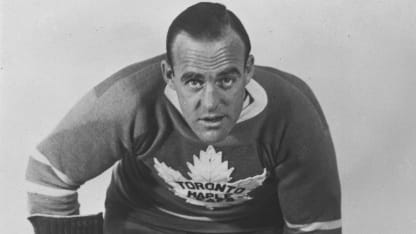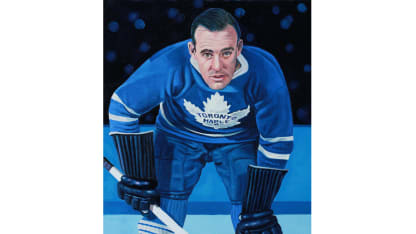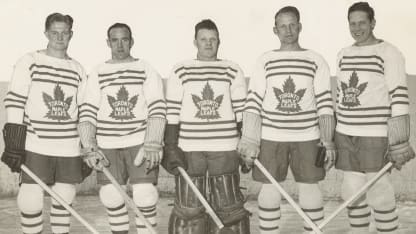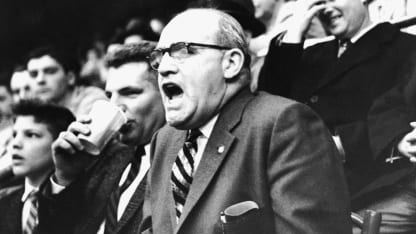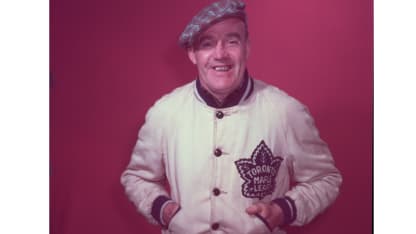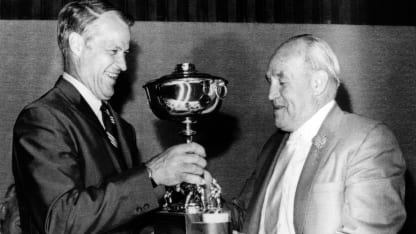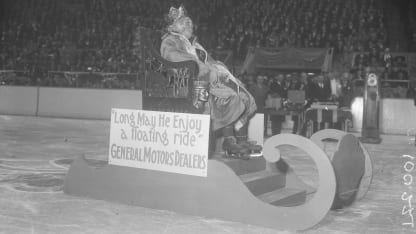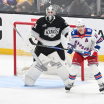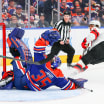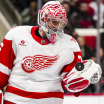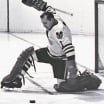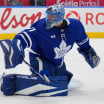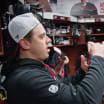One of King's favorite verbal targets was the Boston Bruins' Shore, his biggest rival among the game's top defensemen, aside from Toronto's Hap Day, who would become his teammate on the Maple Leafs. During one Boston-Toronto game, Clancy belted the larger Shore into the boards. "In a flash, he turned on me," Clancy said in his biography, "Clancy: The King's Story," "with one big mitt raised ready to let me have it. 'Hello, Eddie,' I countered, quickly grabbing his extended fist and pumping his arm up and down, 'And how are you tonight?' Before he realized what was happening to him, Shore had mumbled, 'I'm pretty good, Clancy. And how are you?'"
In Game 2 of their 1936 playoff encounter, Shore got upset at a key moment when Maple Leafs forward Charlie Conacher first clocked Red Beattie and then Shore but escaped being penalized by referee Odie Cleghorn. Before the next faceoff, Clancy sidled up to Shore and whispered, "Cleghorn is blind, Eddie.
He's robbing you sure as hell. Look how he blew that call on Beattie." That sent Shore into a rage, and he attacked Cleghorn, drawing a minor penalty. Then Shore fired a puck at the ref, earning a 10-minute misconduct. The Maple Leafs scored four goals with Shore in the box to win the game and the total-goals, quarterfinal series.
It was said that Clancy was in hundreds of fights and never won one, mainly because bigger teammates like Conacher defended him. The King often said that his only win came in Boston against Shore, whom one of Clancy's teammates had flattened. As Shore rose to his knees, Clancy socked him. Clancy recounted, "Getting to his feet, he snarled, 'Do that again, Clancy.' 'Okay, Eddie,' I remember saying. 'Get back down on your knees.'"
The tradition of fighting in the NHL was never more apparent than during Clancy's era, and despite his size he was a very willing pugilist. Tales of his involvement fill hockey history books like "The Montreal Maroons." In it, author William Brown describes one especially wild end-of-game brawl in February 1932 between the Maroons and Maple Leafs in which numerous combatants squared off, including Montreal's Nels Stewart and Toronto's Alex Levinsky, although some accounts say it involved Clancy alone. In Brown's telling, the King tried to aid Levinsky but was intercepted by a flying tackle from Harold Starr.
